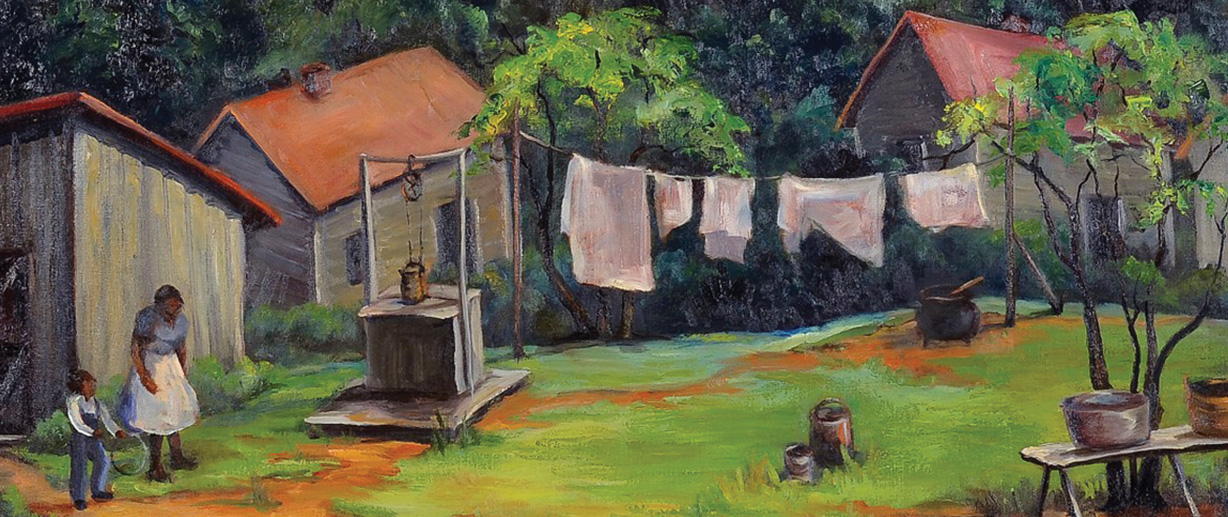Wofford recently received a $6,942 Preservation Assistance grant from the National Endowment for the Humanities that will allow the college to survey the works on paper of Julia Elizabeth Tolbert. The funding will be used to hire a conservation consulting firm.
Thanks to a gift from her family, Wofford holds Tolbert’s works in the permanent collection. The college has the largest collection of Tolbert’s work with more than 300 pieces.
Tolbert, active from the 1930s through the mid-1950s, studied under Lamar Dodd, namesake of the University of Georgia’s Lamar Dodd School of Art. Until recently, Tolbert has been largely unknown because she rarely showed her works and was not interested in selling them either. Wofford College became the largest holder of her art in 2011 when two generations of Tolberts donated nearly the entire life-work corpus — including paintings in oil, watercolor and gouache as well as drawings, prints, jewelry and ceramics — to the college’s permanent collection. The Gibbes Museum of Art in Charleston, S.C., and Hargrett Rare Book and Manuscript Library at the University of Georgia also hold examples of her work.
“Tolbert’s work explored Southern landscapes, still life, portraits and genre scenes, including an emphasis on the urban realism of African Americans who lives in the south during the 1940s and 1950s,” says Dr. Youmi Efurd, Wofford’s curator and coordinator of the Tolbert restoration project. “We appreciate this opportunity through the NEH to improve our ability to preserve and care for this significant collection.”
Wofford students in the arts have been studying Tolbert and her works since the college gained the collection. According to Julie Woodson, who wrote about Tolbert in “Art for All: The Artistic Journey of Julia Elizabeth Tolbert” for her senior honors art thesis in 2018: “While Julia Elizabeth Tolbert was a woman artist working during a pivotal time in the Southern regionalist movement, her work often reveals a more progressive outlook on the world, which was mirrored in her life as well. Much like other artists of her time, she was a white, native Southerner from a privileged, well-educated background. However, while many artists would idealize the South, curating an image of its serenity, traditions, and beauty, Tolbert would instead depict life as she saw it. At times, her work is beautiful and idealized, and at others, it reflects the tensions of the world, thus embracing and reflecting her own life experience. Underlining it all is her notion that art can be for all people.”
Tolbert wrote in her own thesis for her master’s program at the University of Georgia, “It is the art product that expands our horizon, perfects our perception, removes personal prejudice, and reveals ways of feeling and seeing other than our own.”
To learn more about Tolbert and her art or to discover other items in the college’s permanent collection, held in the Rosalind Sallenger Richardson Center for the Arts, visit Wofford.edu/rsrca.
